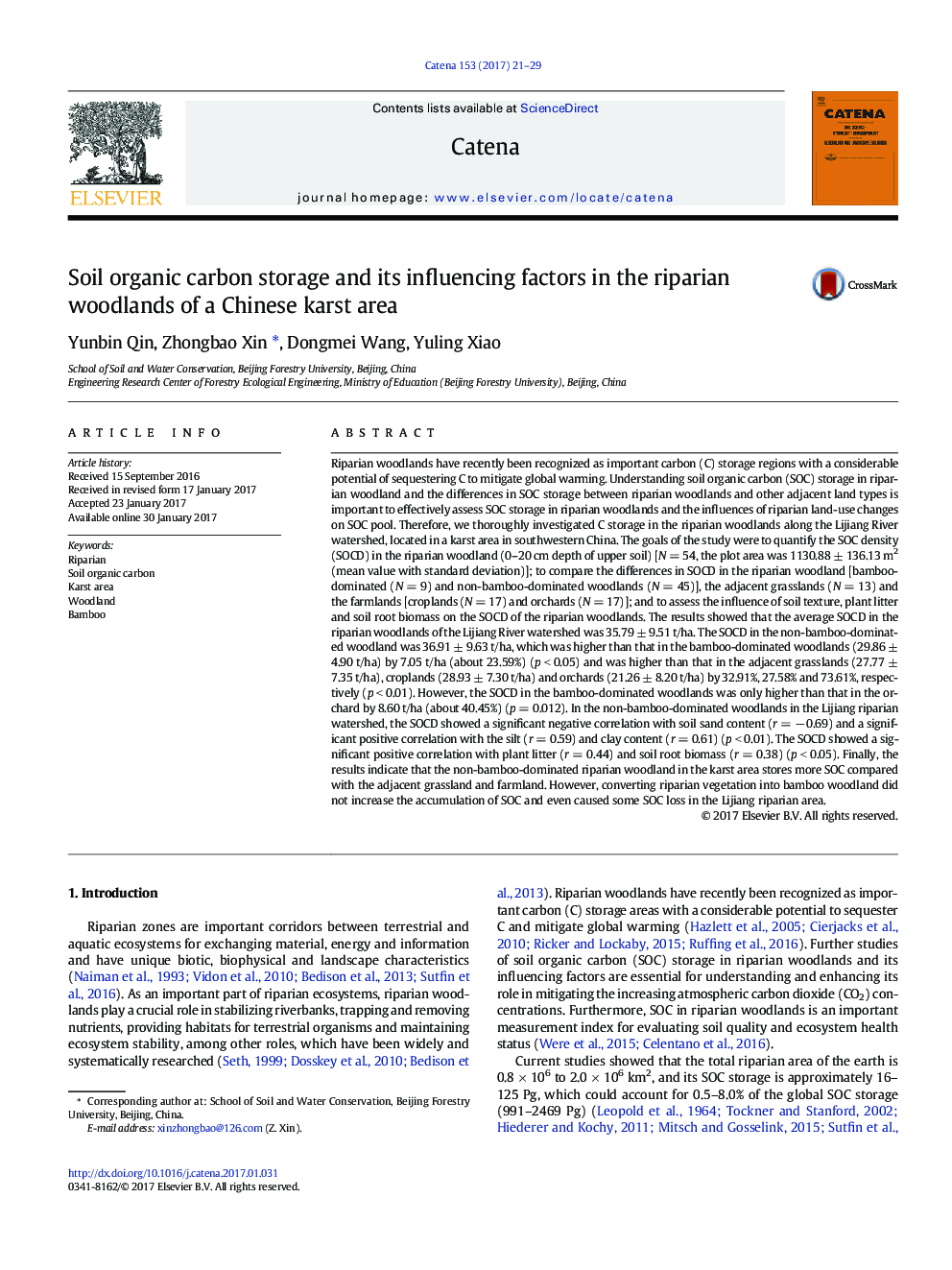| Article ID | Journal | Published Year | Pages | File Type |
|---|---|---|---|---|
| 5770145 | CATENA | 2017 | 9 Pages |
â¢The riparian non-bamboo dominated woodland had a higher SOC content than the bamboo dominated woodland.â¢The riparian non-bamboo dominated woodland had a higher SOC content than the adjacent grasslands and farmlands.â¢The present management modes of bamboo-dominated woodlands could cause SOC loss.â¢The accumulation of soil root biomass and plant litter could effectively increase the SOC accumulation.
Riparian woodlands have recently been recognized as important carbon (C) storage regions with a considerable potential of sequestering C to mitigate global warming. Understanding soil organic carbon (SOC) storage in riparian woodland and the differences in SOC storage between riparian woodlands and other adjacent land types is important to effectively assess SOC storage in riparian woodlands and the influences of riparian land-use changes on SOC pool. Therefore, we thoroughly investigated C storage in the riparian woodlands along the Lijiang River watershed, located in a karst area in southwestern China. The goals of the study were to quantify the SOC density (SOCD) in the riparian woodland (0-20 cm depth of upper soil) [N = 54, the plot area was 1130.88 ± 136.13 m2 (mean value with standard deviation)]; to compare the differences in SOCD in the riparian woodland [bamboo-dominated (N = 9) and non-bamboo-dominated woodlands (N = 45)], the adjacent grasslands (N = 13) and the farmlands [croplands (N = 17) and orchards (N = 17)]; and to assess the influence of soil texture, plant litter and soil root biomass on the SOCD of the riparian woodlands. The results showed that the average SOCD in the riparian woodlands of the Lijiang River watershed was 35.79 ± 9.51 t/ha. The SOCD in the non-bamboo-dominated woodland was 36.91 ± 9.63 t/ha, which was higher than that in the bamboo-dominated woodlands (29.86 ± 4.90 t/ha) by 7.05 t/ha (about 23.59%) (p < 0.05) and was higher than that in the adjacent grasslands (27.77 ± 7.35 t/ha), croplands (28.93 ± 7.30 t/ha) and orchards (21.26 ± 8.20 t/ha) by 32.91%, 27.58% and 73.61%, respectively (p < 0.01). However, the SOCD in the bamboo-dominated woodlands was only higher than that in the orchard by 8.60 t/ha (about 40.45%) (p = 0.012). In the non-bamboo-dominated woodlands in the Lijiang riparian watershed, the SOCD showed a significant negative correlation with soil sand content (r = â 0.69) and a significant positive correlation with the silt (r = 0.59) and clay content (r = 0.61) (p < 0.01). The SOCD showed a significant positive correlation with plant litter (r = 0.44) and soil root biomass (r = 0.38) (p < 0.05). Finally, the results indicate that the non-bamboo-dominated riparian woodland in the karst area stores more SOC compared with the adjacent grassland and farmland. However, converting riparian vegetation into bamboo woodland did not increase the accumulation of SOC and even caused some SOC loss in the Lijiang riparian area.
